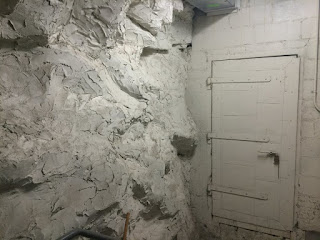 |
| Pete Long (clarinet): Neptune, the mystic Photo credit: Philip Nash |
Back in the day, "raggin’ or jazzin’ the classics" was all the rage. It was the American bandleader John Kirby who really put the idea on the map when his tightly organised sextet recorded swinging versions of Schubert’s Serenade and Dvorak’s Humoresque in the 1930s. Later on, they added Anitra’s Dance from Peer Gynt and the intriguingly titled Bounce Of The Sugar Plum Fairy, thus anticipating Duke Ellington’s more comprehensive examination of these time-honoured classics. On a somewhat larger scale, the blind British pianist Alec Templeton created Bach Goes To Town for Benny Goodman’s orchestra in 1938. Sub-titled Prelude And Fugue In Swing it was featured at the band’s Second Carnegie Hall Concert the following year. Speaking of Templeton’s composition, Goodman said it was “as if Bach were writing for a swing band.”
 |
| Joe Pettitt (double bass) Saturn, the bringer of old age Photo Credit: Philip Nash |
That said, for jazz people, it really took the imprimatur of the mighty Duke Ellington himself to give this short-lived fashion the ultimate badge of approval. When he and his amanuensis Billy Strayhorn conceived the idea of applying the Ellingtonian lexicon to their paraphrase of Tchaikovsky’s ever-popular Nutcracker Suite there was surprise, naturally, but ultimately, approval. The authoritative Gramophone Magazine’s reviewer described Ellington’s re-workings as "a wonderfully affectionate and superbly stimulating reimagining of Tchaikovsky’s suite" while other critics revelled in the roles fulfilled by the band’s greatest soloists in each of Duke’s separate arrangements. Much the same was said of his equally distinctive look at the Peer Gynt Suites Nos 1 and 2 by the Norwegian composer Edvard Grieg even if the Royal Swedish Academy of Music spoke sniffily of Ellington’s apparent heresy as "offending to Nordic music culture". No matter, for the music was superb as can be judged when patiently transcribed extracts from both the Ellington Nutcracker and Peer Gynt suites are performed by Pete Long’s splendid Echoes of Ellington Orchestra at the upcoming Cadogan Hall concert on 8 September.
 |
| Callum Au (trombone) and Mike Hall (tenor sax) The Asteroids, the dancers Photo Credit: Philip Nash |
While Ellington’s precise motivation for embarking on these re-creations remains obscure, that for Ellington enthusiast Long’s entirely fresh but still essentially Ellingtonian examination of Gustav Holst’s The Planets Suite is crystal clear. “While driving, Venus from The Planets Suite came on the radio,” he recalled. “It suddenly struck me how Ellingtonian the curves of the melody were. By the time I’d reached my destination, the broad idea of restructuring the whole suite for an Ellington-style orchestra had coalesced.” Sounds simple, doesn’t it? Only then could the herculean task of re-orchestrating the many planetary parts commence. After all, Holst’s suite had been written for a large orchestra so eight months of heady work ensued, key melodies were extracted and a signature character assigned to each of Holst’s movements. Ideas were tested and expanded, and individual soloists highlighted as they might have been had Ellington himself been in charge. That done, all that remained was for The Planets Suite by Holst but re-arranged by Pete Long for big band to be recorded. Which it has been.
 |
| Colin Good (piano) Uranus: the magician Photo Credit: Philip Nash |
LINK: The Classical Duke Ellington at Cadogan Hall
The Jazz Repertory Company Showreel:
Something worth making a noise about

















